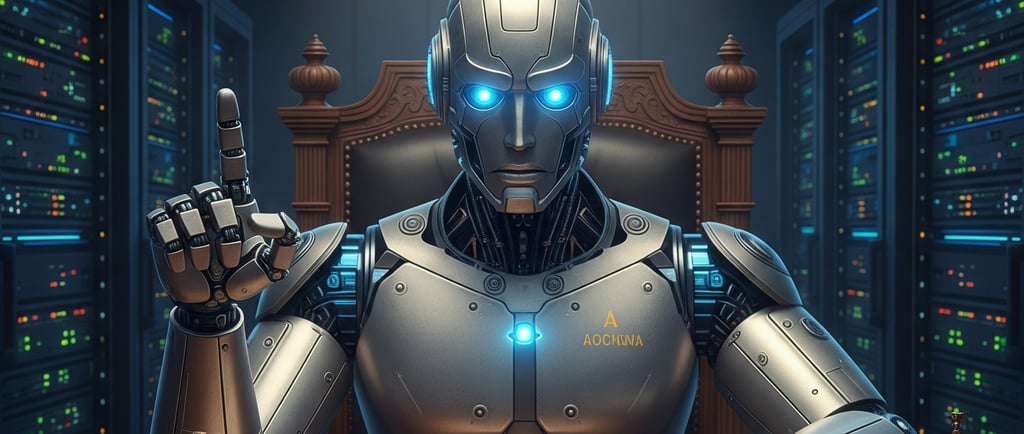When an AI Messes Up, Who Goes to Jail? The Unsolvable Problem of AI Ethics
As artificial intelligence (AI) systems become increasingly autonomous and embedded in our daily lives—from self-driving cars to healthcare diagnostics—a pressing ethical and legal dilemma emerges: When an AI messes up, who is held responsible? This question touches the core of AI ethics and law but remains one of the most complex, unresolved challenges today.
NON-STOIC PHILOSOPHIES
8/20/20252 min read


The Challenge of AI Accountability
Unlike human actors, AI systems don’t have intentions, consciousness, or moral understanding. They make decisions based on algorithms trained on data, sometimes in unpredictable ways. So when an AI causes harm—like a car accident or a medical misdiagnosis—the traditional legal frameworks struggle to assign blame.
Who Could Be Responsible?
The Developer: The programmers and engineers who designed and trained the AI may be partially liable if negligence or errors in design led to harm.
The User or Operator: The individual or organization deploying the AI system might hold responsibility, especially if misused or unsupervised.
The Manufacturer: For physical AI products like robots or autonomous vehicles, the company producing the device can face liability for malfunctions.
The AI Itself: There are discussions about whether highly autonomous AI should bear some form of legal personhood or responsibility, but this idea is widely debated and controversial.
Why Assigning Responsibility Is Hard
AI decision-making is often a “black box,” where even creators can’t fully explain how an algorithm arrived at a conclusion. Compound this with AI’s ability to learn and adapt post-deployment, and determining causality becomes almost impossible.
Moreover, AI systems often involve multiple parties—developers, data providers, users—making it challenging to pinpoint a single accountable actor.
The Legal and Ethical Implications
Assigning accountability is not only a legal challenge but also a moral one. How do we protect victims? How do we ensure justice while encouraging AI innovation?
If no one is held responsible, victims may be denied compensation or justice. If too many parties face liability, innovation could slow.
Ethical AI governance requires clear frameworks balancing innovation with responsibility.
Emerging Solutions
Regulatory Frameworks: Some governments propose specialized AI laws defining liability based on risk categories and transparency standards.
Explainable AI: Developing AI that can clarify its decision processes to help trace responsibility.
AI Insurance: New insurance models can cover liabilities arising from autonomous system errors.
Legal Personhood Debate: Some suggest granting AI limited legal status akin to corporations to address accountability, though widespread agreement is distant.
Conclusion: A Complex Puzzle Without Easy Answers
As AI continues transforming society, clarifying who goes to jail—or who pays—when AI misbehaves remains a critical, unsolved issue. It challenges existing legal and ethical norms and demands innovative thinking and collaboration across technology, law, and ethics.
The balance between harnessing AI’s benefits and protecting individuals will shape the future of AI ethics and governance for years to come.
Waste no more time arguing about what a good man should be. Be one - Marcus Aurelius
We suffer more often in imagination than in reality - Seneca
Wealth consists not in having great possessions, but in having few wants - Epictetus
